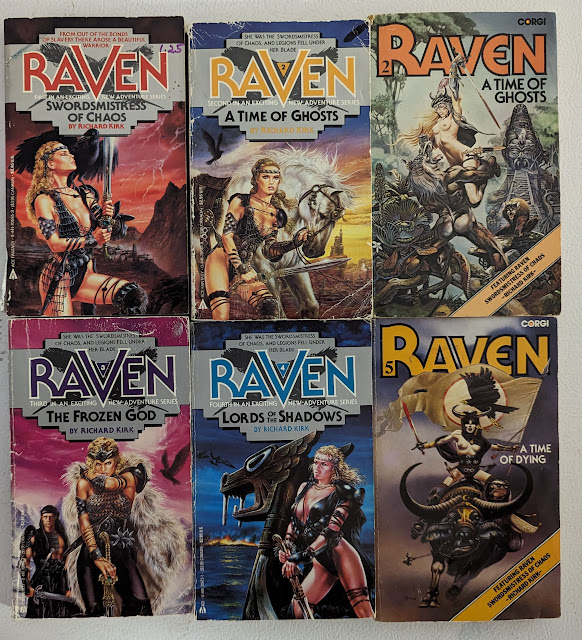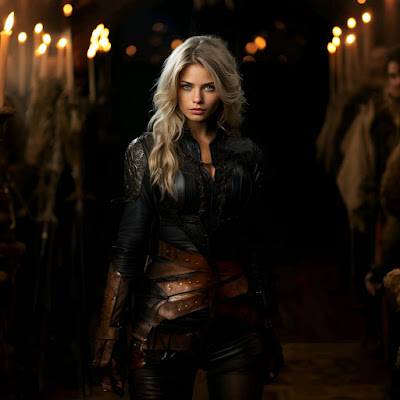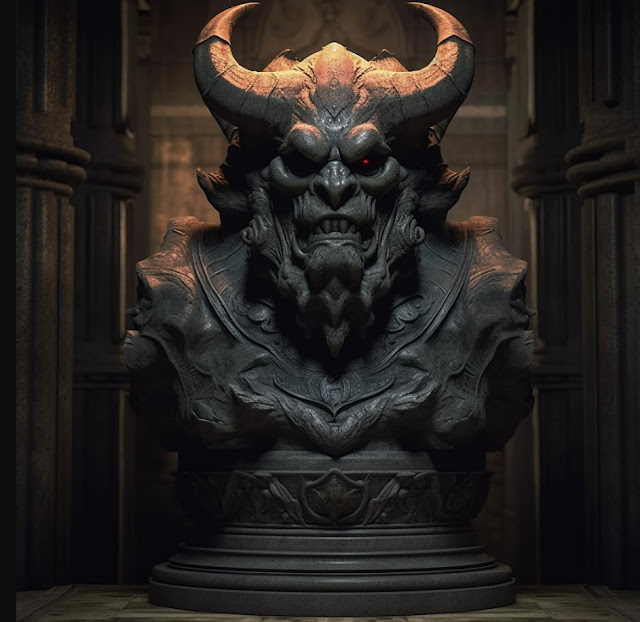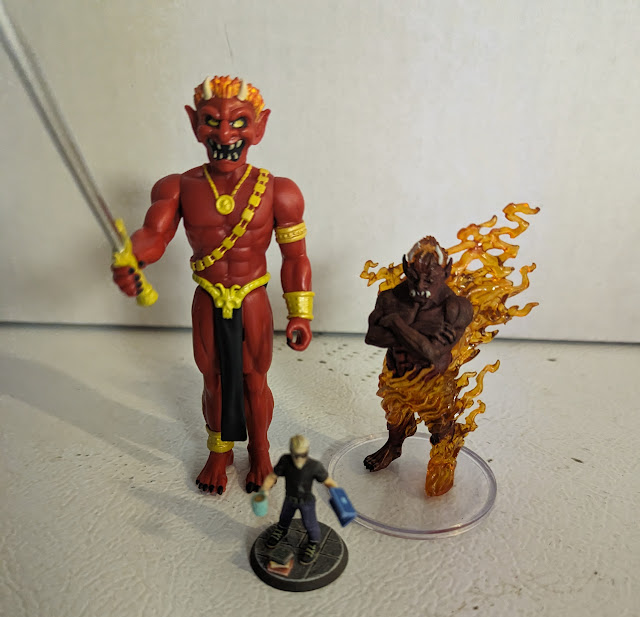Our cover is an amazing one from Fred Fields and his nod to Sandro Botticelli's "The Birth of Venus." For this one, "The Birth of Night" Fields had his then-girlfriend (now wife) Sandy do the modeling. I remember this from back then and I really liked then, still do.
Dragons from this time period are very different than the ones I have done in the past. This Dragon (and many from the 3rd edition era when I picked it back up) was published by Wizards of the Coast, has a bunch of names I don't normally associate with Dragon (but with other RPG products), and the format has all sorts of changes. All in all, this is going to be just as much as an adventure as ones from the 1970s or early 1980s.
One new thing. Lots and lots of websites! Sadly many are no longer active.
We get a big ad for the Planescape Torment video game.
The Wyrm's Turn is the Editorial section that discusses this issue's theme, The Dark. Dave Gross is the editor at this time.
Fun ad for the 25th Anniversary tour. We are reminded throughout that this is the 25th Anniversary of D&D. We are nearly at 50 now.
Sage Advice is still here and Skip Williams offers a lot of advice about various AD&D 2nd Ed rule questions. I half expected to see this one phased out, but there was still a need for it and not everyone was on the Internet just yet (but close). I do have to point out that Sage Advice is still by postal mail. No email address yet. I am sure this will change sometime in the next few months.
The letters section is now D-Mail. They DO have an email address you can use along with the standard postal one. It might even still be active. Just to be 100% clear, I am not sure when a lot of these changes happened, I had what we called "Grad School Guilt." That is where if you read anything not directly related to your subject matter caused a lot of guilt. So I was not reading Dragon all that much from like 1992 on until the 2000s. Oh. The letters. Right. So in something else of a red letter day for me, I recognize one the names of someone that sent in a letter! So Joe Kushner, I hope you got your answer! Later on in the same feature, I see another name I recognize from online interaction. D-Mail is long, longer than the letters section used to be.
The general consensus in D-Mail is that Dragon Magazine has improved with Wizard's purchase of TSR. While of course they are going to publish that, and yes there is plenty of evidence to support this claim, I would personally pick the magazine back up in subscription about a year or so from this issue.
Nodwick appears as a comic strip on page 13. An order form for back issues of Dragon with issue #70 as the earliest one you can still get. $8.00 and it can be yours. This is about to get less attractive as we will see later in this issue.
Ray Winninger is up with the Dungeoncraft column. This covers building something for your game. This one starts with the notion of building up the PC's base of operations. He covers some rumors and other background building of the area and ends with a map of the tree base. Rather interesting really and set up to be easily added to anyone campaign or game. In fact I am not seeing anything here that could not be used in an OSR game or a 5e game.
George Vrbanic is next with the PC Portraits feature. This time 14 pictures of Dwarves. An ad for Baldur's Gate follows.
We get to our themed featured articles now. Up first, Wizards of Dusk & Gloom by Tony Nixon. This covers some options for the AD&D Player's Options books. I actively disliked the Skills & Powers books. That being said these options and kits are pretty cool and add a lot of flavor to the wizard class. There are three options here, the Shadow Caller, the Shadow Seeker, and the Shadow Hunter. There might some 3e equivalent prestige classes out there or some 5e subclasses. There are also three "Books of Shadows" which gives us 17 new shadow-based spells. From what I can tell these spells did make it to the giant Spell Compendiums released by Wizards.
An interesting set of ads. A single page with a bunch of companies and their web addresses. Among them are Guardians of Order (with a Sailor Moon book), Eden Studios (featuring the Abduction Card game), and RPGnet.By Any Other Name covers Dwarven Names from Owen K.C. Stephens. A fun little set of tables to build a new dwarf name.
Objet d' Art is from Dawn Ibach and details the types of treasure you can find in a hoard. Very detailed and quite extensive really. Also can be used in any edition of the game.
Our fiction section is from J. Gregory Keyes, The Fallen God.
Me and My Shadow continues our Shadow and Dark feature. This article is by Spike Y. Jones. This covers a number of shadow-centric magic items. This flows into the next article Conjuring in the Dark. This covers 13 new shadow-based spells.
Johnathan M. Richards is next with an Ecology of... article, this time Ecology of the Dark Naga. The article seems longer that the previous Ecology articles. While it seems more detailed than the previous ones from the Golden Age, but lacking some of the charm of the old Ed Greenwood ones. Though this one is good, just not sure if the fiction elements live up to the rest of the article. Call me weird, but my preferred Ecology of articles always treated their subject as some sort of scholarly discussion.
Peter Whitley gives us something that will be something more and more common; AD&D monsters from a computer game. This time some monster from Myth: The Fallen Lords. There are four new monsters in AD&D Monstrous Compendium format.
John Kovalic is up with Dork Tower.
A Little Bit of Magic from Lloyd Brown III covers how to measure out magic items in a campaign to keep it from going too Monty Haul. Examples include magic items with Noncombat Effects, Intermittent Effects, Self-Destructive, Limited Time periods, and items with charges. Advice is given to avoid armor and weapons with pluses to all things. So a sword +1 is great but it means you will need bigger and better (and more magical) ones later. A sword that just +1 vs say undead keeps the players excited for any magical sword. Or armor that is magically light, but doesn't provide any better protection than normal armor of the same sort. While it was far to late in the game for me at this point, this would have been good advice for me to revisit later on in the 3e and 5e days.
In something that seems really familiar, some Marvel characters. Though this time the Marvel SAGA system (if I am remembering correctly). This time we get Dark Phoenix (Jean Grey) and Phoenix (Rachel Summers) writeups from Jeff "Zippy" Quick and Steve Miller.
Role Models gives us some Alternity alien minis.
The Convention Calendar gives us the best conventions for the Summer of 1999. A couple of things to note for me. There is a Capitol Con XV at the Prairie Capitol Convention Center in Springfield, IL. That not only was not very far from where I grew up, it was new when I still lived there! I don't think I ever knew about it. Despite it being listed in Dragons before. I can't find any more details on it. Interestingly enough there are listings for August, but Gen Con is not one of them.
The Ares section is back, this time with Alternity branding. Stephen Kenson (of Green Ronin fame) is up with The Twilight Jungle. This not only continues the magazine's main theme, but the aliens here look very much like something you could find on Pandora from Avatar, only 10 years before the movie came out. The article is fun but highlights the fact that I always wanted to try out Alternity. Something about it just always grabbed me and I just never got the chance to play it or even read it much. Maybe one day I'll get back to it.
Dragon Mirth has our comics of the month, plus a sort of find a word puzzle that looks fun. There is a Love Canal joke that I am not sure many would get these days.
Knights of the Dinner Table has a two-page spread.
TSR Previews (yes it is still called that) gives us new products for the next couple of months. A few books listed still have their concept covers. Of note are the Forgotten Realms interactive atlas (which I never owned) and the Dragon Magazine CD-ROM which I grabbed the moment I could from my FLGS, which was now for me actually local (and the same one I still use today). A few novels including two I would later read; Ru Emerson's "Against the Giants" (which I only sorta liked) and Ed Greenwood's "Silverfall: Stories of the Seven Sisters" (which I enjoyed more than I thought I would).
TSR News lets us know that the 25th Anniversary Edition boxed set will be released in August. Better grab one of these while you can, the after-market prices are going to crazy! In other news, Gary Gygax will be at Gen Con in August, running games, holding seminars and signing copies of the 25th Anniversary boxed set.
Finally in Profiles, Steve Kenson gives us some background on cover artist Fred Fields.
So really a good issue. I had a lot of apprehension about approaching this era of Dragon/TSR. I can recall sitting on my couch reading one of the first WotC-produced TSR Ravenloft books and thinking maybe the company and game I had enjoyed for so long but was feeling quite apathetic too was turning around. This issue of Dragon redoubles that. There is a sense of optimism for the future of the game that I had not personally experienced in the late 90s and did really feel until the 3rd Edition Era. Wizard of the Coast did save D&D and the proof is in these pages.
While many will debate the various "ages" of the game; when was the Golden Age, when did the "Silver Age" begin and what was the time post-Gygax and pre-WotC? One thing for certain for me is that the time between say 1994 and 1999 is a big mystery to me that I did not get to investigate in any detail until I got my Dragon Magazine CD-ROM. Even that only took me to Issue #250.
For this new exploration of Dragons, I am setting my "end date" as Issue #275. It's a nice number, it takes us just inside the changes for 3e and it was just before I resumed my subscription. I guess by that logic I am setting my "starting" Issue at #151 or so. I have already done some past that.
Personally, I think these "newer" Dragons will be every bit as interesting to me as the ones from the late 70s and early 80s.

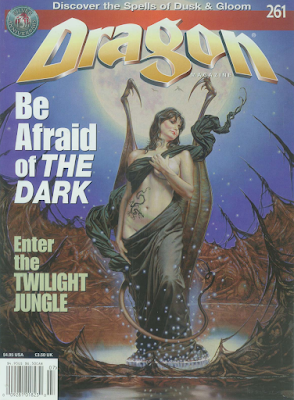


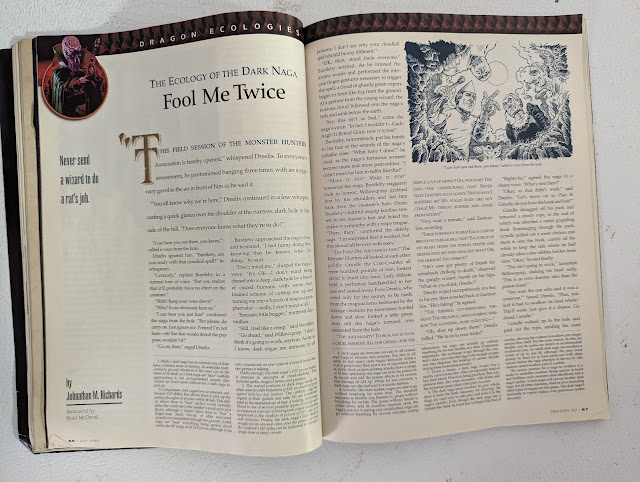


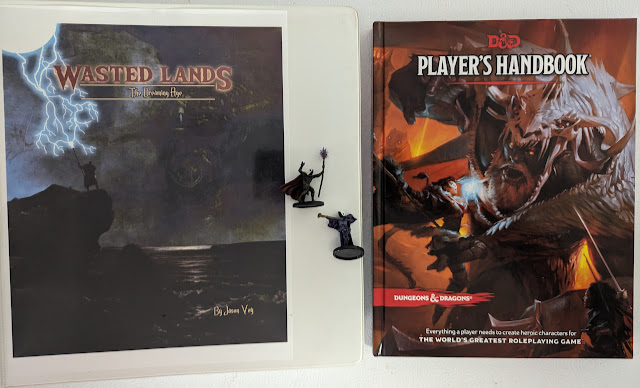
.png)


